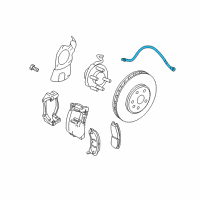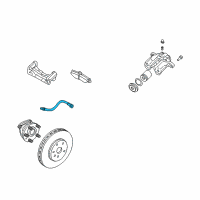< Back ×
2008 Cadillac STS Brake Hose
My Vehicle Change Vehicle
2008 Cadillac STS
< Back to View All
Brake Lines & Hoses
- Department
- Brands
- Prices
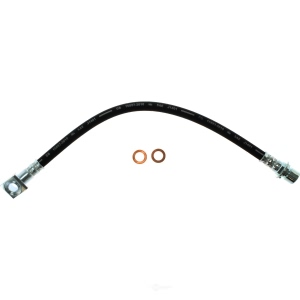
 $12.67Product Specifications
$12.67Product Specifications- Notes: 303mm Front Disc; 5 Lug; Standard Brakes;323mm Front Disc; 5 Lug; Perf Brakes
- UPC: 805890194897
- Part Description: 2008 Cadillac STS Rear Driver Side Brake Hose
Vehicle Fitment- 2008 Cadillac STS | All Trims | All Engines
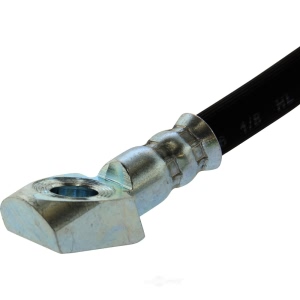
 $11.96Product Specifications
$11.96Product Specifications- Notes: 303mm Front Disc; 5 Lug; Standard Brakes;323mm Front Disc; 5 Lug; Perf Brakes
- UPC: 805890513421
- Part Description: 2008 Cadillac STS Rear Passenger Side Lower Brake Hose
Vehicle Fitment- 2008 Cadillac STS | All Trims | All Engines
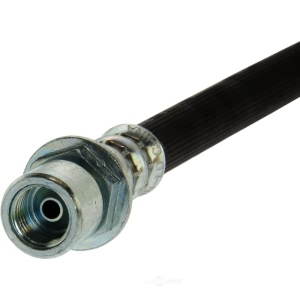
 $10.07Product Specifications
$10.07Product Specifications- UPC: 805890513131
- Part Description: 2008 Cadillac STS Rear Passenger Side Upper Brake Hose
Vehicle Fitment- 2008 Cadillac STS | All Trims | All Engines
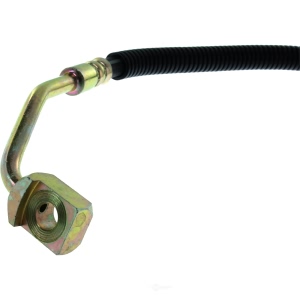
 $20.96Product Specifications
$20.96Product Specifications- UPC: 805890343431
- Part Description: 2008 Cadillac STS Front Passenger Side Brake Hose
Vehicle Fitment- 2008 Cadillac STS | All Trims | All Engines

 $20.96Product Specifications
$20.96Product Specifications- UPC: 805890343721
- Part Description: 2008 Cadillac STS Front Driver Side Brake Hose
Vehicle Fitment- 2008 Cadillac STS | All Trims | All Engines
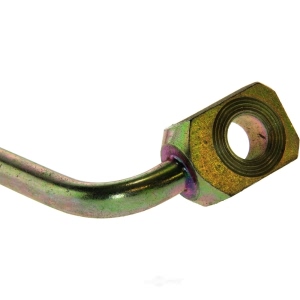
 Product Specifications
Product Specifications- Notes: 6 Lug; Brembo Brakes
- UPC: 805890247579
- Part Description: 2008 Cadillac STS Brake Hose
Vehicle Fitment- 2008 Cadillac STS | All Trims | All Engines
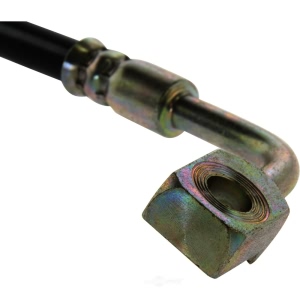
 Product Specifications
Product Specifications- Notes: 6 Lug; Brembo Brakes
- UPC: 805890247593
- Part Description: 2008 Cadillac STS Brake Hose
Vehicle Fitment- 2008 Cadillac STS | All Trims | All Engines
- Product Specifications
- Notes: Sts, W/O AWD; Sts, W/AWD; Sts-V
- Location: Passenger Side
- Other Names: Brake Hose, Flex Hose
- Item Dimensions: 3.1 x 27.3 x 2.1 inches
- Item Weight: 1.20 Pounds
- Fitment Type: Direct Replacement
- Replaces: 15875850, 15933095
- Part Description: 2008 Cadillac STS Hose Asm, Front Brake
Vehicle Fitment- 2008 Cadillac STS | Base, Platinum, V | 6 Cyl 3.6 L GAS, 8 Cyl 4.4 L GAS, 8 Cyl 4.6 L GAS
- Product Specifications
- Notes: W/O Heavy Duty
- Location: Passenger Side
- Other Names: Brake Hose, Flex Hose
- Item Dimensions: 7.4 x 2.1 x 13.1 inches
- Item Weight: 1.20 Pounds
- Fitment Type: Direct Replacement
- Replaces: 25768199, 15875846, 15933092, 15244148, 25767148
- Part Description: 2008 Cadillac STS HOSE ASM, RR BRK
Vehicle Fitment- 2008 Cadillac STS | Base, Platinum, V | 6 Cyl 3.6 L GAS, 8 Cyl 4.4 L GAS, 8 Cyl 4.6 L GAS
- Product Specifications
- Notes: W/Heavy Duty
- Location: Passenger Side
- Other Names: Brake Hose, Flex Hose
- Item Dimensions: 6.2 x 2.1 x 15.3 inches
- Item Weight: 1.20 Pounds
- Fitment Type: Direct Replacement
- Replaces: 10388553
- Part Description: 2008 Cadillac STS Brake Hose
Vehicle Fitment- 2008 Cadillac STS | Base, Platinum, V | 6 Cyl 3.6 L GAS, 8 Cyl 4.4 L GAS, 8 Cyl 4.6 L GAS
- Product Specifications
- Notes: W/O Heavy Duty
- Location: Driver Side
- Other Names: Brake Hose, Flex Hose
- Item Dimensions: 15.6 x 2.1 x 1.1 inches
- Item Weight: 0.50 Pounds
- Fitment Type: Direct Replacement
- Replaces: 25767147, 15875845, 15244147, 15933091
- Part Description: 2008 Cadillac STS Brake Hose
Vehicle Fitment- 2008 Cadillac STS | Base, Platinum, V | 6 Cyl 3.6 L GAS, 8 Cyl 4.4 L GAS, 8 Cyl 4.6 L GAS
- Product Specifications
- Notes: W/Heavy Duty
- Location: Driver Side
- Other Names: Brake Hose, Flex Hose
- Item Dimensions: 2.1 x 17.0 x 1.0 inches
- Item Weight: 0.60 Pounds
- Replaces: 15208294
- Part Description: 2008 Cadillac STS Hose Asm-Rear Brake
Vehicle Fitment- 2008 Cadillac STS | Base, Platinum, V | 6 Cyl 3.6 L GAS, 8 Cyl 4.4 L GAS, 8 Cyl 4.6 L GAS
- Product Specifications
- Notes: Sts, W/O AWD; Sts, W/AWD; Sts-V
- Location: Driver Side
- Other Names: Brake Hose, Flex Hose
- Item Dimensions: 3.1 x 27.8 x 2.0 inches
- Item Weight: 1.20 Pounds
- Fitment Type: Direct Replacement
- Replaces: 15933094
- Part Description: 2008 Cadillac STS Hose Asm, Front Brake
Vehicle Fitment- 2008 Cadillac STS | Base, Platinum, V | 6 Cyl 3.6 L GAS, 8 Cyl 4.4 L GAS, 8 Cyl 4.6 L GAS
FAQ for Brake Hose Repair
Q: What is the recommended torque for the front brake hose bracket bolts?
A:
The recommended torque is 14 N.m (124 lb in).
By Bob
GM Specialist
01/11/2022Q: What is the recommended torque for the fittings?
A:
The recommended torque is 18 N.m (13 lb-ft).
By Bob
GM Specialist
01/11/2022Q: What is the removal procedure for the Front Brake Hose?
A:
The procedure is to raise and suitably support the vehicle, remove the tire and wheel assembly, clean all dirt and foreign material from the brake hose and the brake pipe fittings, remove the wheel speed sensor wiring harness retainers from the brake hose bracket, remove the front brake hose bracket bolts, disconnect the brake pipe fitting from the brake hose, cap the brake pipe fitting to prevent brake fluid loss and contamination, using a flat-bladed tool, remove the brake hose retainer from the brake hose, remove the brake hose from the brake hose bracket, remove the brake hose fitting bolt from the brake caliper, remove the brake hose from the brake caliper, plug the brake caliper inlet port to prevent brake fluid loss and contamination, place a shop towel on a hard surface, tap the threaded end of the brake hose fitting bolt on the shop towel to remove the gaskets from the bolt, remove and discard the two copper brake hose gaskets.
By Bob
GM Specialist
01/11/2022Q: What is the recommended torque for the fitting?
A:
The recommended torque is 18 N.m (13 lb-ft).
By Bob
GM Specialist
01/11/2022Q: What is the replacement procedure for the Brake Pip?
A:
The procedure is to inspect the area of brake pipe to be repaired or replaced, release the brake pipe to be replaced from the retainers, measure the length of the pipe to be replaced, add to the measurement taken the appropriate additional length required for each flare to be created, cut the brake pipe squarely to the measured length, remove the sectioned brake pipe from the vehicle, select the appropriate size of brake pipe and tube nuts, strip the nylon coating from the brake pipe end to be flared, chamfer the inside and outside diameter of the pipe with the de-burring tool included in the J 45405, install the tube nuts on the brake pipe, loosen the die clamping screw of the J 45405, select the corresponding die set and install the die halves into the die cage, place the flat face of an unused die against the die halves in the clamping cage and hold firmly against the counterbored face of the dies, remove the unused die, ensure that the rear of both dies are seated firmly against the enclosed end of the die cage, hand tighten the clamping screw against the dies, select the appropriate forming mandrel and place into the forming ram, rotate the hydraulic fluid control valve clockwise to the closed position, rotate the body of the J 45405 until it bottoms against the die cage, operate the lever of the J 45405 until the forming mandrel bottoms against the clamping dies, rotate the hydraulic fluid control valve counterclockwise to the open position, insert the finishing cone into the forming ram, rotate the hydraulic fluid control valve clockwise to the closed position, rotate the body of the J 45405 until it bottoms against the die cage, operate the lever of the J 45405 until the finishing cone bottoms against the dies, rotate the hydraulic fluid control valve counterclockwise to the open position, loosen the die clamping screw and remove the dies and pipe, lightly tap the dies until the die halves separate if necessary, inspect the brake pipe flare for correct shape and diameter, install the pipe to the vehicle with the appropriate brake pipe unions, bleed the hydraulic brake system, and inspect the brake pipe flares for leaks by starting the engine and applying the brakes.
By Bob
GM Specialist
01/11/2022Q: What is the installation procedure for the?
A:
The procedure is to install the intermediate brake hose assembly to the mounting studs, install the intermediate brake hose assembly mounting nuts to the mounting studs, remove the caps from the intermediate brake pipe fittings, connect the 2 brake pipe fittings to the intermediate brake hose assembly, remove the plug from the brake caliper inlet port, assemble the brake hose, install the brake hose fitting bolt to the brake caliper, remove the cap from the crossover brake pipe fitting, install the brake hose retainer to the rear frame bracket, connect the crossover brake pipe fitting to the intermediate brake hose assembly, bleed the hydraulic brake system, install the tire and wheel assembly, and lower the vehicle.
By Bob
GM Specialist
01/11/2022Q: What is the recommended torque for the brake pipe fitting?
A:
The recommended torque is 18 N.m (13 lb-ft).
By Bob
GM Specialist
01/11/2022Q: What is the installation procedure for the Rear Brake Hose?
A:
The procedure is to remove the plug from the brake caliper inlet port, assemble the brake hose, the new copper brake hose gaskets, and the brake hose fitting bolt to the brake hose, install the brake hose fitting bolt to the brake caliper, install the brake hose to the frame bracket, install the brake hose retainer to the brake hose, remove the cap, install the brake pipe fitting to the brake hose, bleed the hydraulic brake system, install the left tire and wheel assembly, and lower the vehicle.
By Bob
GM Specialist
01/11/2022Q: What is the recommended torque for the bolts?
A:
The recommended torque is 34 N.m (25 lb-ft).
By Bob
GM Specialist
01/11/2022Q: What is the removal procedure for the Brake Intermediate Hose?
A:
The procedure is to raise and support the vehicle, remove the right rear tire and wheel assembly, clean all dirt and foreign material from the brake hose and the brake pipe fittings, disconnect the crossover brake pipe fitting from the intermediate brake hose assembly, remove the brake hose retainer from the rear frame bracket, disconnect the brake pipe fittings from the intermediate brake hose assembly, disconnect the brake hose fitting bolt from the brake caliper, lug the brake caliper inlet port to prevent brake fluid loss and contamination, place a shop towel on a hard surface, tap the threaded end of the brake hose fitting bolt on the shop towel to remove the gaskets from the bolt, remove and discard the 2 copper brake hose gaskets, remove the intermediate brake hose assembly mounting nuts from the studs, remove the intermediate brake hose assembly from the vehicle.
By Bob
GM Specialist
01/11/2022See more FAQs (8)

